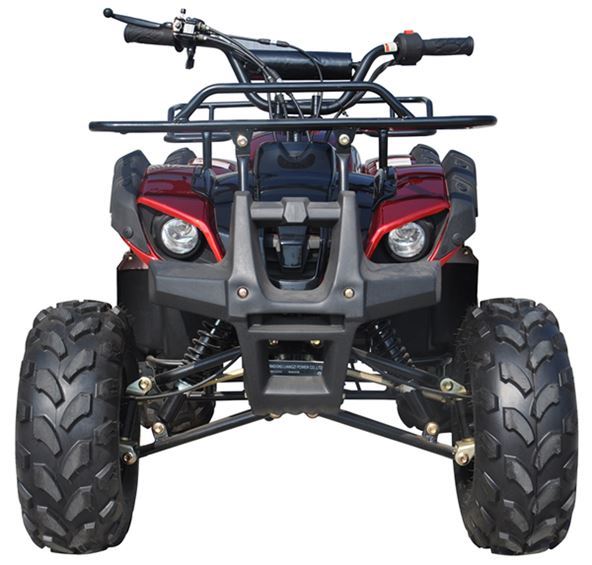If you’re looking for ways to make your quad go faster, this is where you want to be. I will show you the most common ways riders make their ATVs faster, I’ll also offer some helpful tips along the way.
With more horsepower and torque, you will notice better acceleration and a higher top speed from your quad. But with the engine working harder, are these upgrades safe for your ATV?
Yes, they are. Anytime you ride your quad faster or harder than normal you are increasing the wear and tear that happens over time. You can limit these effects by performing routine maintenance though.
Be careful if you have factory warranty though. Many alterations will void a warranty, so first check to make sure if you don’t want your warranty to voided. If you do have a warranty, and want to keep it, it may be best to just not modify the machine at all until the warranty has expired.
Overall, these upgrades are considered safe and many riders have been making these changes to their quad for years and years. Lets start by looking at the easiest and cheapest ways to make your ATV faster.
A quick and easy change you can make, is to start using higher octane fuel. A lot of quads don’t require that you use higher octane fuel from the manufacturer, but it can help increase the performance of your engine.
If you can, don’t use ethanol based fuels and opt for the higher octane. It will cost a few more bucks than the cheap fuel, but you’ll certainly notice the difference when you hammer on the throttle.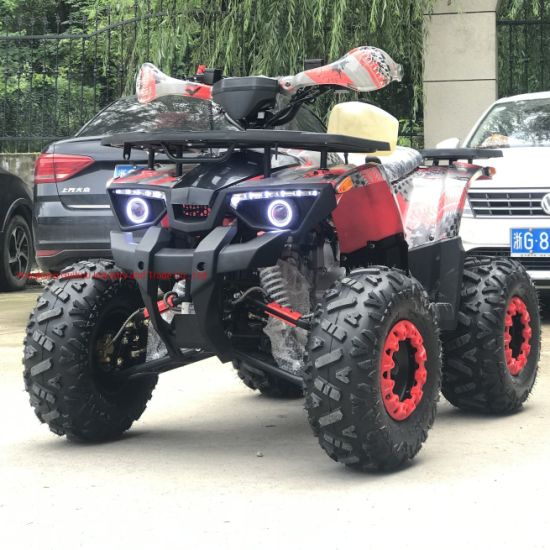
Higher octane fuel burns cleaner, giving you better gas mileage and less corrosion to the mechanical parts of your fuel system. Sure the better mileage isn’t really noticeable in a quad, but the performance differences are there.
Some riders want even more of a boost than the fuel sold at a gas station, so they will add more octane to their fuel themselves. Here is a link to Boostane Professional Octane Booster on Amazon. This is one of the most popular and widely used octane boosters out there, but really any octane booster will work.
You can just add a little bit to the gas in your quad and mix it up a bit by rocking back and forth on the machine. I like to pre-mix it in a gas can before putting it in the gas tank, that way I can get the measurements exactly right.
You should be checking your air filter regularly and cleaning it when necessary. If the air filter starts getting clogged up, it will affect the amount of air the engine can use to run.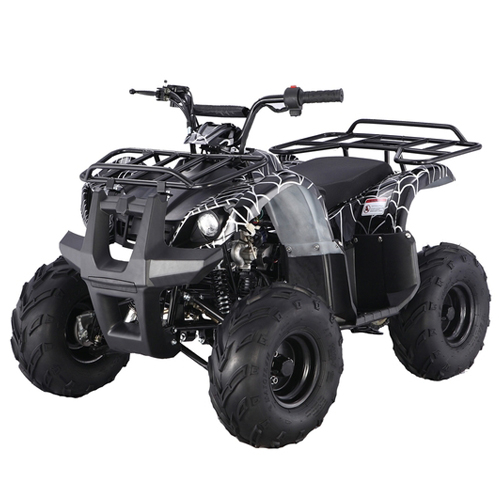 Riding with a clogged air filter is almost like choking your engine. Check out this article on How To Properly Clean An ATV Air Filter if you need a guide.
Riding with a clogged air filter is almost like choking your engine. Check out this article on How To Properly Clean An ATV Air Filter if you need a guide.
A lot of riders will also upgrade their air filter to a lifetime replacement air filter like this K&N Replacement Air Filter on Amazon. Just make sure you type in your make and model and get the right one for your machine.
The increased air flow these filters allow will let your engine receive more air. More air fuel mixture means more power. This is one of the easiest ways to get more performance out of your machine.
On most ATVs, if you look on the right side of your handle bars where your throttle is, you’ll see a governor. On the governor, there will be a screw sticking out, that’s your throttle limiter. The throttle limiter will limit the amount of gas you can give your engine while riding.
Make sure the screw is turned all the way out, if you want to be able to give max throttle. To adjust this, simply loosen the lock-nut holding the throttle limiter screw in place, adjust the screw, and tighten the lock-nut back down.
To adjust this, simply loosen the lock-nut holding the throttle limiter screw in place, adjust the screw, and tighten the lock-nut back down.
A lot of people will screw the throttle limiter in if they have children that might be able to ride the machine. Double check the throttle limiter screw to make sure you’re getting the max your engine will allow.
Of course tire pressure will play a role depending on the type of terrain you’re riding in. When riding in sand or snow, a lower tire pressure will make you faster, but on flat hard surfaces, a higher tire pressure would help more.
I would suggest riding at around 5 psi as a good all around number. But to find an exact tire pressure for you and your terrain, check out my ATV Tire Pressure article where I go into a lot more detail about tire pressure and terrain differences.
As far as tire weight goes, you’ll really be looking at changing out the wheels to help with that. I mean sure, don’t expect big heavy mud tires to make your quad go faster, but really the biggest issue I see here is people with steel wheels.
I mean sure, don’t expect big heavy mud tires to make your quad go faster, but really the biggest issue I see here is people with steel wheels.
You’ll want to get yourself some light weight aluminum wheels if you want to make your quad faster. A nice set of performance tires won’t hurt either. Tire size might make a difference too, depending on what you’re going for.
Check out these All Terrain ATV UTV Tires made by SunF here on Amazon if you’re in the market for tires. Make sure to get the right tire size for your ATV and your rims.
If you want faster acceleration, go with a smaller tire. If you want more top speed, go with a larger tire. Tire size is very similar to changing out your sprocket for gearing. A larger tire will take more power to turn it, but will cover more ground per revolution. I usually don’t change the tire size unless I am trying to Increase My ATV Ground Clearance.
Adding a nitrous kit to your ATV can give you a good boost of speed when you really need it.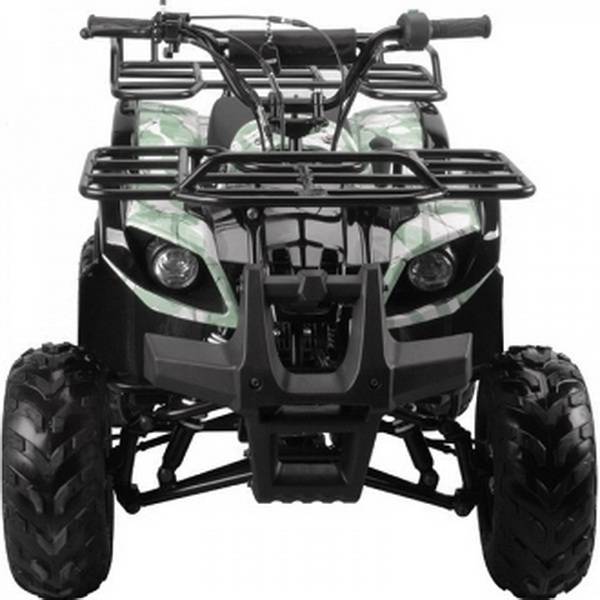 They aren’t really all that hard to install or use either. Sure every machine is different, and you’ll want to get a setup you feel safe with. But a lot of people have getting some extra speed this way.
They aren’t really all that hard to install or use either. Sure every machine is different, and you’ll want to get a setup you feel safe with. But a lot of people have getting some extra speed this way.
There are a few different types of nitrous setups you could go with, for example, wet or dry. To learn more about nitrous check out my How And Why To Use Nitrous On An ATV article. In that article I walk you through the process so you can decide if it’s right for you.
Upgrading the exhaust on your ATV can get expensive and require some work. But it’s a sure fire way to increase the performance of your quad. With more air being able to leave the engine, it can pull more air in. This setup is great to do in parallel with a high flow air intake system.
If you can’t afford to do the entire exhaust system from the headers on down, you could always get a performance slip-on exhaust. This won’t increase horsepower as much as an entire performance exhaust system will, but it will give you a bit more horsepower.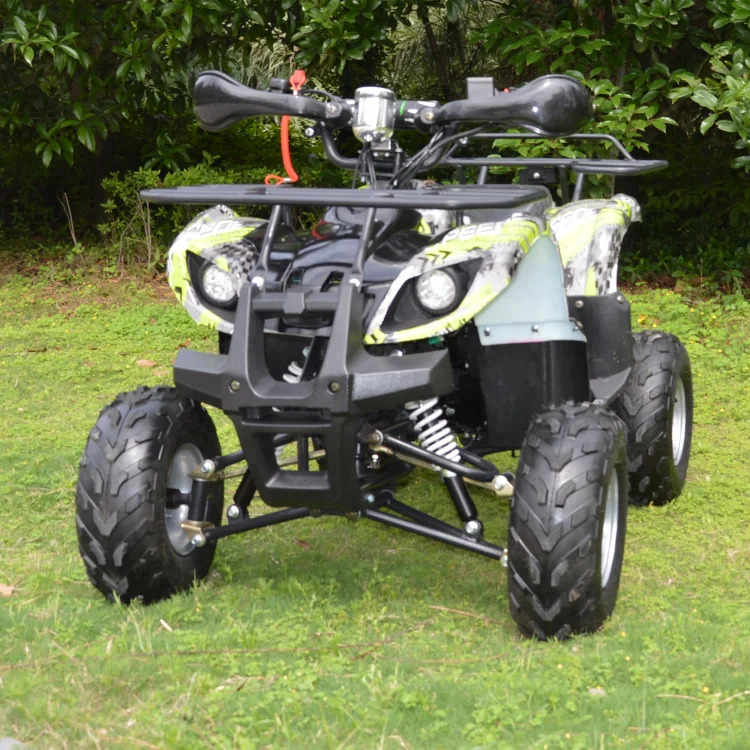
Here’s an example Performance Exhaust System For A Honda TRX 300EX to give you an idea of what you’ll need. You are looking for a kit that has the exhaust parts coming from the engine all the way to the muffler and exhaust tip.
Usually the performance exhaust systems will be a bigger diameter than stock, or will be cone shaped to increase in diameter slowly. This allows more airflow through the engine. With more air fuel mixture, you will feel more power and speed when riding.
To change the gear ratio you would need to buy a new front or rear sprocket and replace your existing one. A lot of riders do what is called ‘gearing down’ which is when you get a larger rear sprocket to increase acceleration. This will cause your top speed to drop though. To learn more about gear ratio and how to adjust yours, check out my Complete Gear Ratio Guide.
To ‘gear up’ you would get a smaller rear sprocket which will increase your top speed but decrease your acceleration. You can find most sprocket sizes front and back online now for a pretty good price.
You can find most sprocket sizes front and back online now for a pretty good price.
The thing you have to decide is, do you want an acceleration increase or a top speed increase. I don’t typically mess with the gearing of my quads, but I have for particular ATVs that I only ride through trails and never reach top speed. In those cases, gearing down makes sense to give you a quicker jump from the start.
If you decide you want to change a sprocket to adjust your gear ratio. I wrote an article with step by step instructions for you, showing you exactly How To Change The Chain And Sprockets On An ATV.
Installing a big bore kit can be a lot of work, but will give you a huge boost in performance. Acceleration will be quicker and top speed will increase as well. You’re basically upping the cc of your engine.
With most big bore kits, you will be replacing the piston and the cylinder with a larger size. This allows for more air fuel mixture to enter the combustion chamber resulting a huge performance boost to your quad.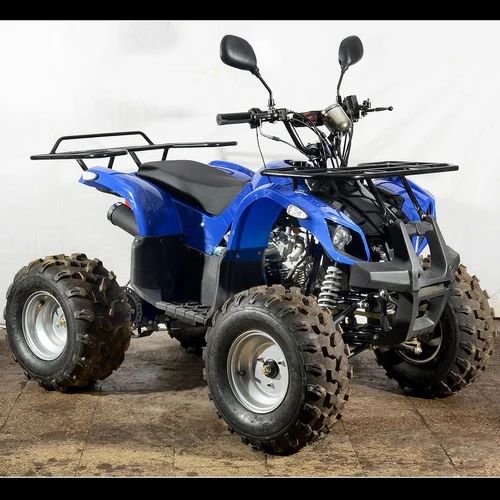
Here’s an example Big Bore Kit For A Honda TRX 400EX on Amazon to give you an example of what you’re getting yourself into. You will most likely get all the piston rings and gaskets needed to do the swap with any decent kit.
There you have it, the most common ATV upgrades to increase performance and get some more speed out of your machine. If you’re looking for the cheapest and easiest way to increase performance, I would suggest checking your limiter screw, upgrade to a K&N air filter, use octane booster, and get a slip-on performance exhaust.
Even though you could make all these adjustments to your quad, a lot of riding faster has to do with skill. When you’re racing on track, being able to brake and corner properly is a big deciding factor in most races. Check out my How To Corner On An ATV and How To Brake Properly On An ATV articles to get some tricks and tips on how to ride better.
As always, wear proper safety gear when riding, especially if you’re modifying your quad for speed.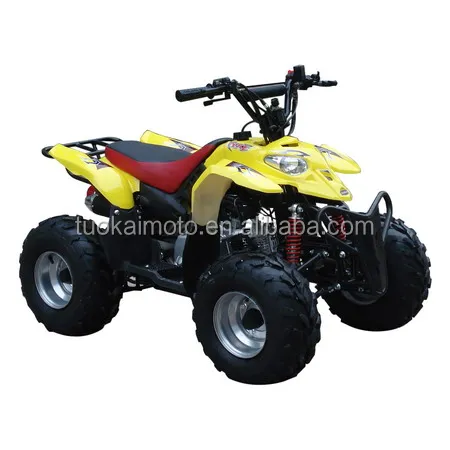 To check out some safety and riding gear that I’ve tried and tested for you, visit the Recommended Gear section of this site.
To check out some safety and riding gear that I’ve tried and tested for you, visit the Recommended Gear section of this site.
Sharing is caring!
Just how fast is a Engine Type: 125CC Single cylinder. How fast is 125cc atv? Top Speed is approximately 40 Mph. More speed ratings for other motor sizes on different types of vehicles can be found below.
How fast does a 125cc Dirt Bike Go? Cheap 125cc dirt bikes such as Tao Tao DB17 dirt bikes will however go a bit slower and run at about 20-25 mph. But there are other varieties of Tao Tao 125cc dirt bikes led by this 125cc dirt bike which is near the Coolster’s and Apollo’s by offering a maximum speed of 37 mph.
What is the difference between 125cc and 50cc scooters? The extra 75cc really does make a difference to your top speed. Both 125cc scooters and motorbikes max out at 60mph, which is double the top speed of a 50cc.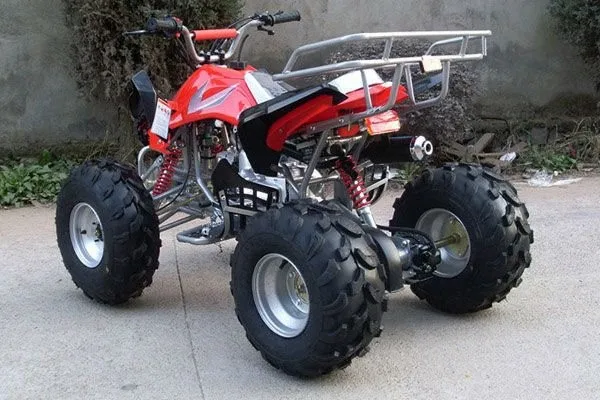 This makes them a much more suitable choice if you plan to do longer journeys or are traveling on paved roads.
This makes them a much more suitable choice if you plan to do longer journeys or are traveling on paved roads.
How fast can a 50cc Scooter go? These are the least powerful scooters on the market, but there are still some benefits to choosing a 50cc scooter. The top speed of a 50cc is 30mph, which doesn’t seem much but is fine for small trips and just getting around town. If you live in a densely populated city, it’s unlikely you’ll be able to go faster than 30mph anyway.
What is the top speed of a dirt bike? For example, a 125cc dirt bike Apollo like the Apollo-DB-X18 (4 strokes, single cylinder) maxes out at 45 mph in perfect conditions. On the other hand, Coolster’s dirt bike 125cc zooms off at top speeds of between 40-45 mph. Remember, this bike has again a single-cylinder, 4-stroke engine.
Table of Contents
Displacement: 125cc, 4 Stroke
————- ——————————————–
Top Speed: Up to 40 MPH (adjustable by using Regulator)
Frame: High Strength Steel
40mph
– Use Better Fuel.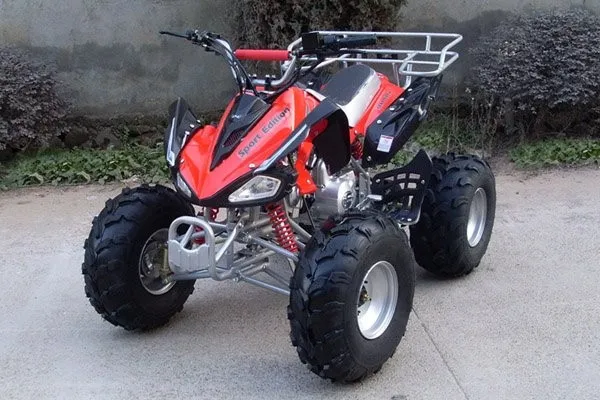
– Upgraded Air Filter.
– Adjust The Throttle Limiter Screw.
– Change Tire Size, Weight, And Pressure.
– Add A Nitrous Kit.
– Upgrade The Exhaust.
– Change The Gear Ratio.
– Install A Big Bore Kit.
200cc ATV Side by Side
— —— ————
150cc 35 MPH
200cc 40 MPH
250cc 50 MPH
300cc 53 MPH
50mph is its limits but keep in mind these are dangerous vehicles at that speed.
35-40mph
Some 150cc scooters, for example, the new Kymco Like 150 R or the People 150 S with its larger wheels deliver power that lets you travel well above metropolitan freeway speeds of 65mph.
150cc is a non-standard measure of volume, not a speed. If you mean how fast can a 150cc motorcycle go then it depends. A streamlined special could probably exceed 150 – 200 km/h in the right conditions. I had a 150cc motorcycle and it cruised nicely at 45/55 mph.
I had a 150cc motorcycle and it cruised nicely at 45/55 mph.
How fast can the 125cc ATV go? My Apollo 9 125cc ATV went 37 mph and that was just stock. After modding, it felt more like a 350cc Atv.
How fast can a 150cc motor scooter go? On a 150cc scooter, you can reach top speeds of up to 65 mph (97 kph) giving you a huge speed advantage over the smaller 50cc engine size. These more powerful motors are ideal if you live in areas with short straits where you can really open up the throttle in short bursts.
60mph
50mph
‘CC’ represents cylinder capacity, i.e., the size of the engine measured in cubic centimetres.
50mph
40mph
The top speed of a 200cc go-kart depends on whether its engine is a 2-stroke or a 4-stroke, as they displace power differently. A 2-stroke 200cc go-kart will reach 120mph at top speed, and a 4-stroke 200cc go-kart will reach 75mph.
A 2-stroke 200cc go-kart will reach 120mph at top speed, and a 4-stroke 200cc go-kart will reach 75mph.
40mph
cc ATV Side by Side
— —— ————
110 30 MPH 10 to 25 MPH
150 35 MPH 15 to 30 MPH
200 40 MPH –
250 50 MPH –
60 mph
50mph
ATVs can be unstable and hard to control, particularly at high speeds. Rollovers and collisions happen often, and some of these are fatal. The center of gravity is higher on a ATV and there are no roll cages or seatbelts. When they tip, you can fall off no matter how fast you are traveling. Protective clothing will help prevent scrapes and cuts if you get thrown from an ATV and ALWAYS WEAR A HELMET! Always ride at a safe speed on a trail meant for ATV use. Each year over 650 people die and well over 125,000 people go to the emergency room because of ATV related injuries.
Given that you are here and want to recognize the full throttle of a 125cc ATV, you need to know what an ATV is and also how fast a 125cc ATV is.
For beginners, an ATV is short for ATV. All-terrain vehicles of all types of soil provide the ATV with a large area.
125cc ATV mainly for youth. This is a safe choice for beginner bikers who are new to this and also want to get more information about driving as well as the roads.
Whenever we talk about 125cc, it is considered to be in the middle category because it can reach top speed and provide enough traction to help you get through the dirt without any problems.
When it comes to ATVs, top speed refers to the highest degree of speed a vehicle can achieve when traveling on the road.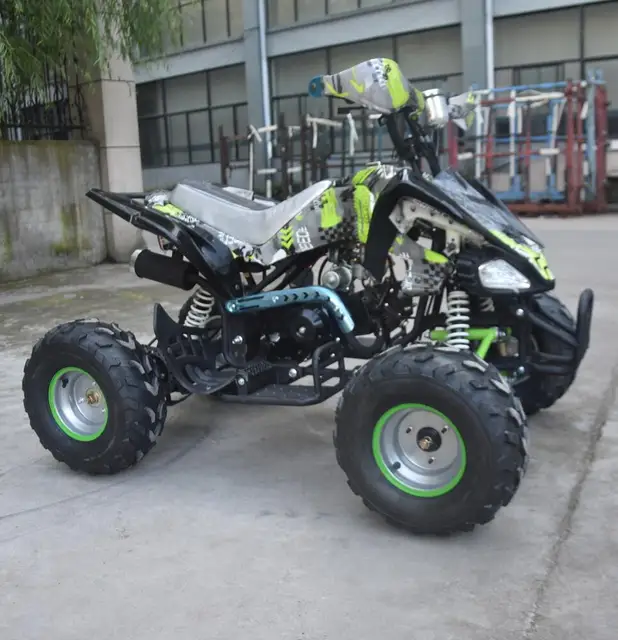 Full throttle varies from bike to bike and depends on a variety of factors which consist of the types of materials used and the components installed.
Full throttle varies from bike to bike and depends on a variety of factors which consist of the types of materials used and the components installed.
Contents
What does 125cc mean? The 125cc engine will take up 125cc, while the larger 700cc engine will take up 700cc. The more cubic centimeters an engine has, the more air and fuel it can consume, which usually results in more power.
125cc ATV can go up to 40 mph ideally . You can slow down to 10 mph and sometimes 5 mph, or you can hit the gas all the way to 40 mph. Youth ATVs are equipped with speed limiters to control their speed. .
Thanks to its many uses, the 125cc ATV The is a great choice as a starter choice for teenagers as well as the for toddlers as it is fast enough to keep their passion going as well as running at around 22 mph or 38 mph.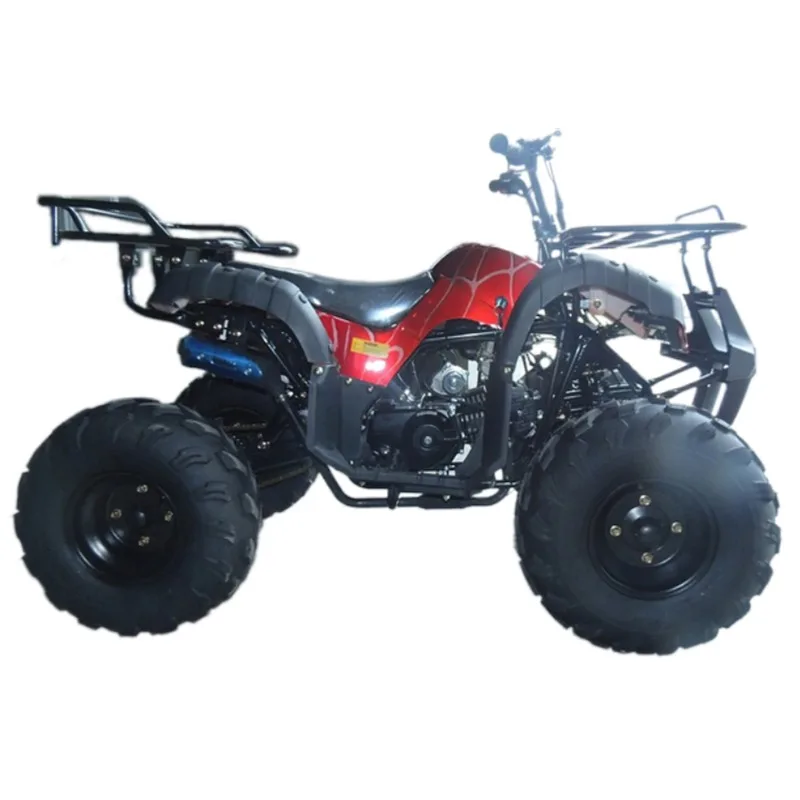 Most importantly, this is a great beginner quad, not powerful enough for serious riding technique, jumping, big climbs or racing.
Most importantly, this is a great beginner quad, not powerful enough for serious riding technique, jumping, big climbs or racing.
Choosing the right engine for you or your child is extremely important when buying an ATV.
Depending on the power of the cylinder, you will surely be able to choose the right ATV for you. Look into joining a list for a better understanding.
Approximately 70 cc - they are used for children up to 11 years of age.
70 to 90 cu. cm - they can be used by teenagers aged 12 to 15 years.
125 to 250 cc cm - suitable for both beginner teenagers and adults.
Cylinder size can start at 50cc and go up to 700cc.
But keep in mind that height is also an important factor when choosing an ATV. Classification from 125 to 250 cu. CM is ideal for beginners who are not familiar with wilderness riding and are unfamiliar with rough or rocky roads.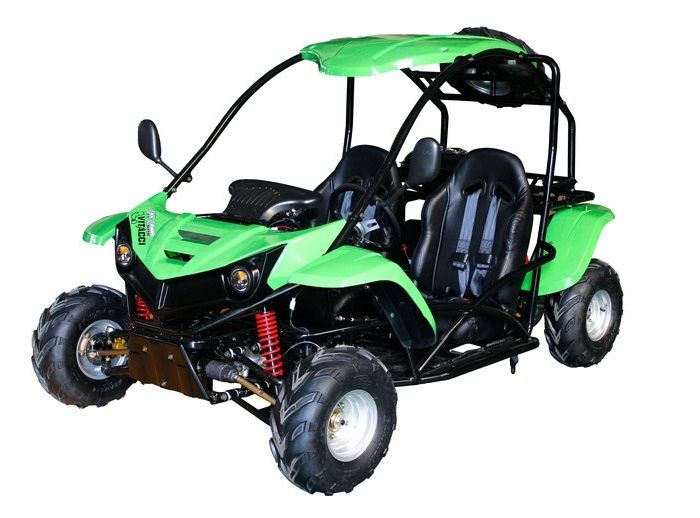 One of the most practical tools for adults or professionals ranges from 450cc to 700cc.
One of the most practical tools for adults or professionals ranges from 450cc to 700cc.
If you are looking for an ATV for your child, you don't have to worry as you stay in the best area. From the list above, it can be seen that engines from junior to 90cc are suitable for children. But to boost the performance of an ATV, different brands have gone to great lengths to find some fantastic 125cc ATVs specifically made for kids.
They are supervised by professionals to make sure they are absolutely safe for children. Each kids quad has unique features as well as additional safety options. If your child loves the outdoors and travelling, an ATV can offer the best taste of nature and flexibility to their hearts, while the controls are still in your hands.
If you do a thorough research, you will certainly be able to find the right one for your child. A couple of points that might help is to make sure you buy one with a speed limiter and it has both headlights and taillights installed as they help a lot.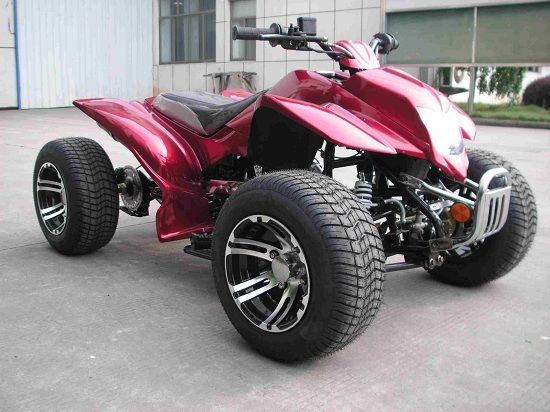
ATV suppliers generally do not set biker weight limits for their youth models. It has optimum load capacity 364 lbs , engine stop button, and push button starter controls. The highest center of mass is cunning.
While a full-size ATV with a huge engine can fit an adult, the risk of injury to a teenager on such a device is much higher. For shorter cyclists, the 125cc ATV is a good choice for the . The 125cc ATV is not the smallest available, however it is not exceptionally large or powerful compared to other models.
1. Use the best fuel.
A quick and easy change you can make is to start using higher octane gasoline. Many ATVs don't need to use higher octane fuel from the manufacturer, but this can help. increase the efficiency of your engine .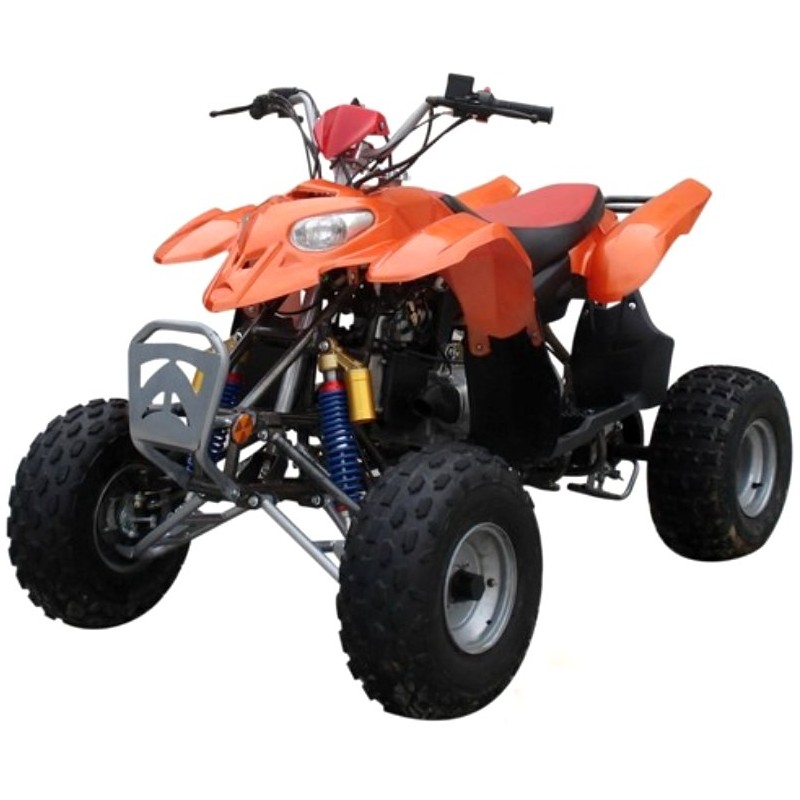
If you can, do not use ethanol-based fuel, and also choose fuel with a higher octane rating of . It will cost a few dollars even more than inexpensive fuel, but you will definitely notice the difference when you step on the gas pedal.
Higher octane gasoline burns cleaner, providing better gas mileage and much less wear on the mechanical parts of your gas system. Of course, the best gas mileage on an ATV is not as noticeable, but there is a difference in performance.
2. Upgraded air filter.
You must be regular inspection of the air filter and clean it if necessary. If the air filter starts to get overloaded, it will certainly affect the amount of air the engine can use to run. Driving with a clogged air filter is almost like turning off your engine.
The increased air circulation these filters provide will definitely allow your engine to get even more air. Much more air-fuel mixture means even more power.
3. Adjust the throttle stop screw.
On many ATVs, if you look to the right side of the handlebar where the throttle is, you will see the boss. A screw will stick out on the handle, this is the throttle limiter. Throttle limiter will limit the amount of throttle You can provide your engine while driving.
Be sure to turn the screw all the way out if you are going to use the maximum throttle. To adjust this, simply loosen the lock nut holding the throttle stop screw in place, replace the screw, and tighten the lock nut by pulling it back.
Check the throttle limiter screw to make sure you are getting the limit your engine can turn on.
4. Change tire size, weight and pressure.
Of course, tire pressure depends on the type of terrain you drive. When riding in sand or snow, lower tire pressure will certainly make you much faster, but on flat, hard surfaces, higher tire pressure can help a lot. more. I would of course 9The 0007 is recommended to run at around 5 psi as good throughout the entire number.
more. I would of course 9The 0007 is recommended to run at around 5 psi as good throughout the entire number.
If you want to make your ATV faster, you need lightweight aluminum wheels. Tire size can also make a difference, depending on what you're doing. Make sure you choose the right tire size for your ATV and your edges.
If you want much more speed, choose a smaller tire. If you need a higher top speed, choose a larger tire. Tire size is very comparable to replacing your tailoring sprocket. A larger tire will need even more power to convert it, but will cover a larger area in one change. I usually don't change tire sizes unless I'm trying to increase the ground clearance of my quad.
5. Add nitrous oxide.
Adding a nitrogen kit to your ATV can give you a nice speed boost when you really need it. In fact, they are not that difficult to install or use.
There are several different nitrous oxide configurations you can choose from, such as wet or completely dry.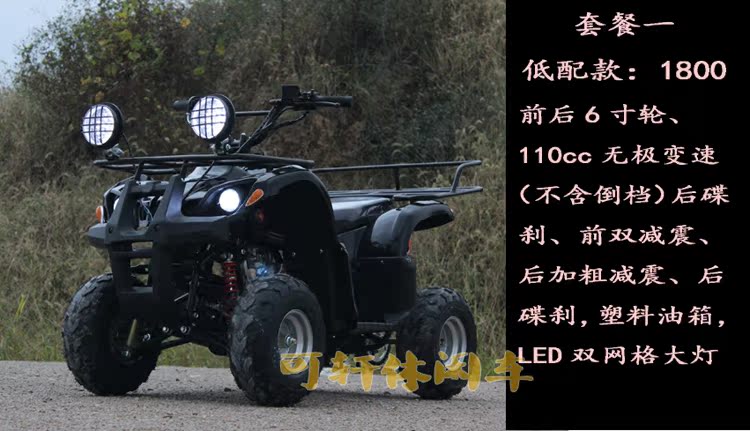
6. Update the exhaust.
Upgrading the exhaust system on your ATV can be expensive and require some work. However, this is a surefire way to improve the efficiency of your ATV. Since more air can come out of the engine, it can take in much more air. . This unit works perfectly in parallel with a high flow air consumption system.
If you can't pay for an entire exhaust system from the exhaust manifolds down, you can always get an efficient overhead exhaust. It won't boost power as much as an efficient exhaust system, but it will certainly give you a bit more horsepower.
Generally, service exhaust systems are larger than the supply, or are definitely tapered for gradual increase in size. This provides even more airflow through the engine. With even more combinations of air and gas, you will really feel even more power and speed while riding.
7. Change the gear ratio.
To change the equipment ratio, you will definitely need to get a new front or rear sprocket and change the existing one. Many cyclists do what's called "downshifting" where you get a big rear sprocket to increase speed. This will cause your full throttle to drop.
Many cyclists do what's called "downshifting" where you get a big rear sprocket to increase speed. This will cause your full throttle to drop.
To "prepare" you should get a smaller rear sprocket, which will certainly increase your full throttle, but decrease your speed.
You need to decide whether you want to increase speed or increase full throttle.
8. Install the large diameter kit.
Fitting a large bore kit may require a lot of effort but will greatly increase productivity. Acceleration will be faster and top speed will certainly increase as well. Usually you increase the size of your engine.
With more sets of large bores, you will definitely be changing piston and cylinder for a larger size. This allows more air/gas mixtures to enter the combustion chamber, greatly improving the performance of your ATV.
After all this talk, it's safe to say that the performance of an ATV depends a lot on performance as well as engine size.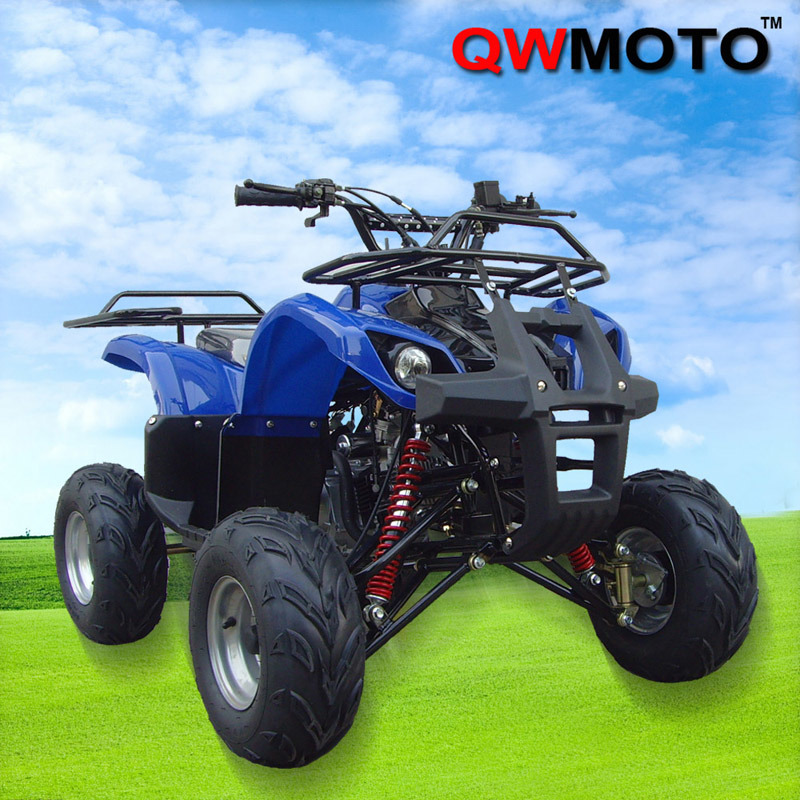 A 125cc ATV is best suited for youth or adult beginners. ATV's top speed can be up to 40 mph (ideally). or even more if changes are made.
A 125cc ATV is best suited for youth or adult beginners. ATV's top speed can be up to 40 mph (ideally). or even more if changes are made.
With a speed controller or adjuster you can control the speed. Because ATVs are built to ride on rough roads, it's a good idea to focus more on performance than speed. You do not need such a high speed for driving on rough roads, as safety and comfort are more important in this situation.
How fast does a 300cc motorcycle go? Detailed view
Rodney L. Herron
Rodney L. is a technical writer and product consultant with over a decade of experience in the automotive industry. Rodney is a fan of high performance machines that run fast and loud and is an expert in all things custom. His numerous articles and reviews are available in our knowledge base. Whether something is wrong with your bike or you are building a custom bike, you can trust Rodney's experience.
You agree that the maximum speed will be limited for safety reasons
Persons over 16 years old are allowed to drive ATVs.
The total load on the ATV must not exceed 150 kg.
While driving, the driver must hold the steering wheel firmly, the passenger must hold the special handles.
When cornering, move (tilt) the body in the direction of the turn.
When tilting the ATV, move (tilt) the body in the direction opposite to the slope.
Always keep your feet on the footrests when moving, even when leaning over.
We provide a free ATV driving instruction before you start using it.
If you notice fluid leaks and/or other problems, stop the engine immediately and inform your instructor.
If you detect the operation of warning signs on the instrument panel (during the initial briefing, you will be shown control devices that you should pay attention to throughout the trip), immediately turn off the engine and inform the instructor.
The ATV before and after the rental is checked in your presence for breakdowns and damages, after which the acceptance certificate is signed.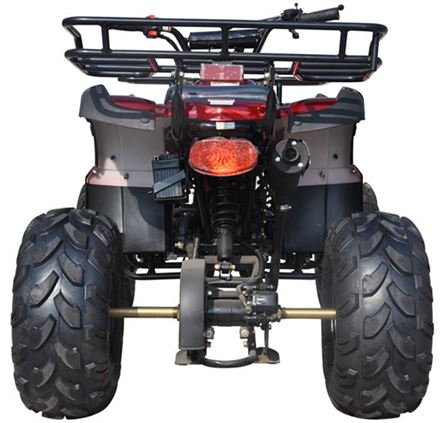
Ride on a quad bike, always wearing helmets only, protective suits are provided free of charge on request.
In the event of a breakdown or accident, inform the instructor or contact him by phone.
If the ATV is damaged due to your fault, you pay the cost of repairs and spare parts.
The time spent during the trip to fix problems that occurred through your fault is not compensated.
You must be instructed in how to operate the ATV before starting operation;
You agree to follow the speed limit set by the guide (instructor).
Do not succumb to the provocations of other citizens to participate in the race; clashes and other actions that can directly or indirectly cause damage to property and citizens;
Do not interfere with your actions or omissions to comply with these rules.
Drive onto highways and other public roads.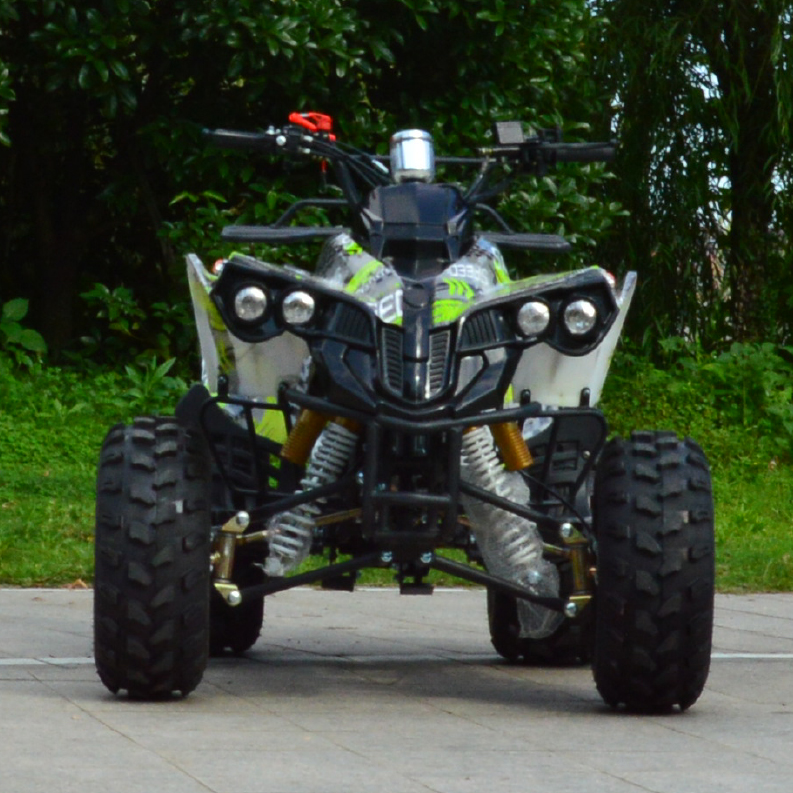
To tow other ATVs, or any other vehicles.
Leave ATV unattended.
Crossing deep water obstacles, driving over fires and areas with smoke or open flames is prohibited.
Gear shifting without stopping the machinery.
Drunk or drugged ATV riding.
Intentional collision with other ATVs.
Intentional collision with obstacles.
Provoking others to collide.
Overtake the instructor and ATVs in front.
Deliberately fall behind the convoy and then overtake the convoy at high speed.
Do not follow the instructions of the instructor.
Touch moving parts such as wheels, drive shafts, variator pulleys, etc.
Talk aggressively, use profanity, and do anything that might disturb the people around you.
• Do not operate the ATV without wearing a helmet of the correct size. It is also necessary to wear eye protection, (protective mask or goggles).
It is also necessary to wear eye protection, (protective mask or goggles).
• Do not consume alcohol or drugs before or while operating an ATV.
• Always follow the instructions and follow the Instructor's recommendations.
• Before each use, make sure the ATV is in good condition and safe to ride. Always follow the rules and recommendations for driving given in the instruction.
• Always use extreme caution and drive slowly when driving in unfamiliar terrain.
• Always keep both hands on the handlebars and both feet on the footrests while riding the ATV.
• Do not operate the ATV on rough, slippery, damaged roads until you have learned and gained the practical skills necessary to control the ATV on such roads. Always be extremely careful when driving in such conditions.
• Do not operate the ATV on slopes that are too steep for the vehicle and for your experience. Practice on small slopes before moving on to difficult ones.
• Always follow the appropriate instructions from the Instructor when entering a hill, check the road surface first, never enter a hill on a road that is too slippery or has a damaged surface. Shift your weight forward of the ATV, never suddenly open the throttle or change gears suddenly. Never drive up a hill at high speed.
Shift your weight forward of the ATV, never suddenly open the throttle or change gears suddenly. Never drive up a hill at high speed.
• Always follow the appropriate instructions from the Instructor when descending and braking on the hill. Inspect the road carefully before descending. Shift your weight back, never go down a hill at high speed. Avoid going downhill at an angle that could cause the ATV to lean to the side. Go straight down if possible.
• Always follow the appropriate Instructor instructions for crossing inclines. Avoid slides on excessively slippery or damaged surfaces. Shift your weight to the side of the lift. Never turn the ATV around on a hill until you have mastered the turning technique. On level ground, avoid crossing steep hills whenever possible.
• To prevent the engine from stalling and the vehicle from reversing when entering a hill, use the appropriate gear and maintain a steady speed. If the engine stalls or the vehicle reverses, follow the Instructor's specific instructions.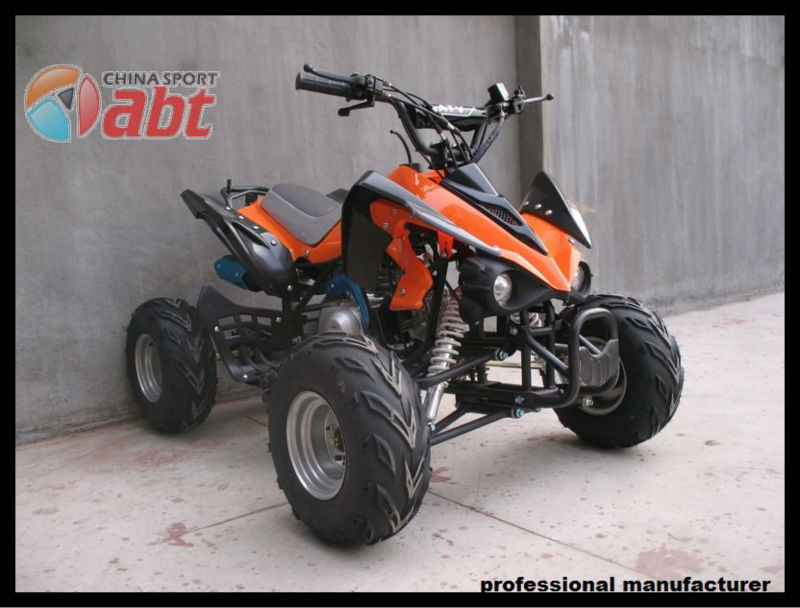
• Always check for obstacles in the road before operating the ATV in unfamiliar terrain. Never try to overcome large obstacles on the ATV, such as large rocks or fallen trees. Always follow the Instructor's specific instructions for overcoming obstacles.
• Be careful when skidding or skidding when practicing at low speed on a flat, smooth road. On extremely slippery surfaces such as ice, drive slowly and be very careful to reduce the risk of slipping or skidding.
• Start decelerating some time before stopping.
• Be aware that wet brakes reduce stopping power. Check your brakes after getting out of the water, if necessary, wait a while for the pads to dry out.
• Always be sure there are no obstacles or people behind you when you turn.
• Never exceed the ATV's stated load capacity. The load must be properly placed and securely attached.
• Never start the engine on a slope, as this may cause damage.
• Observe age guidelines: children under 16 are not allowed to operate an ATV.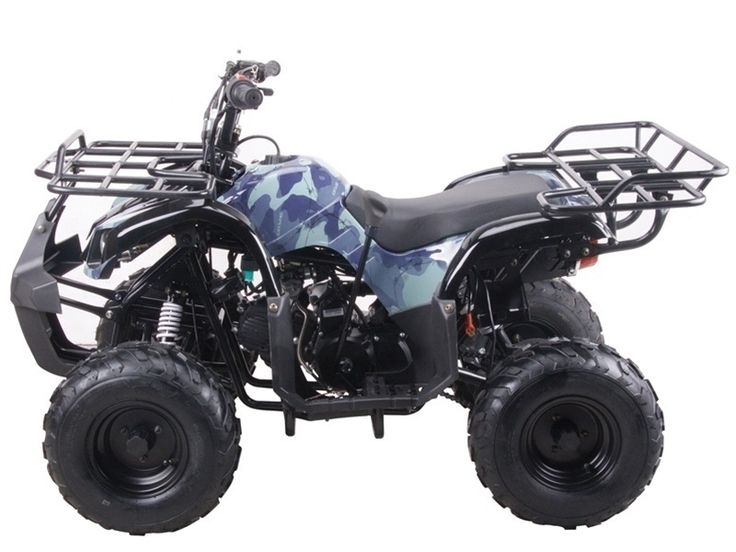 Do not allow a person who does not know how to operate the ATV in a safe manner to operate the ATV.
Do not allow a person who does not know how to operate the ATV in a safe manner to operate the ATV.
• Avoid riding the ATV on paved roads, including driveways, sidewalks, streets and car parks.
• If you need to stop (frozen helmet glass, hands, etc.) do not wait for the group to stop. Raise your left hand up (stop signal for ATVs following you) and gently come to a stop.
The instructor has the right to stop the tour early in case of violation of these rules!!!
To prevent ATV riding from ending up in a long hospital room:
Do not drive too fast. A four-wheel drive ATV is not a car or a motorcycle. It doesn't respond as well to the driver as a car, it can't lean quickly into a corner like a motorcycle. Remember that when riding an ATV it is very easy to roll over on level ground or even crash into a tree at full speed. For example, if a stump comes across in a field under tall grass, the ATV can run into it, and then the rider will fly over the steering wheel, or at least hit it.
Never ride an ATV alone. It is best to ride with someone in a pair on two ATVs. There are a lot of situations when a partner is needed. For example, it is very difficult to put an overturned ATV on wheels, and if it covered you from above, then you won’t even be able to get out from under it alone. The second ATV can pull the first one out of the swamp or tow it to the camp in case of a breakdown.
When passing a difficult obstacle, it is better to get out of the saddle and, carefully working with the brake and accelerator, walk alongside. You should also not go too deep into the water - you can fill the motor.
Place both feet straight on the footrests and hands on the controls.
Start the engine, let it warm up. After that, holding the brake, engage the gear.
Select direction of travel.
Release the brake and slowly press the throttle with your right thumb to start moving. The speed of movement depends on how far the damper is open.
The speed of movement depends on how far the damper is open.
For starters, don't try to drive fast. It is better to learn how to maneuver, handle the brake system and throttle on level ground.
Turn the steering wheel in the desired direction. Tilt your upper body inward and rest your weight on the outside footboard. This will change the balance of traction between the wheels, and the turn will be made smoothly. Turns back are performed in the same way.
ATTENTION!!! ATVs are not designed to make sharp turns or turns at high speed!
When entering a slippery surface, slow down.
Avoid sharp and sharp turns, or the ATV will skid.
When skidding, turn the steering wheel in the direction of the skid and shift your body weight forward. Never slow down during a skid.
An all-wheel drive system can make driving on slippery surfaces much easier.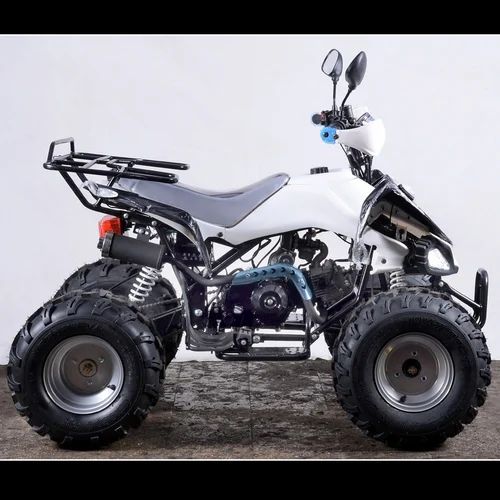
Climb up in a straight path.
ATVs are not designed to climb steep hills (over 25°).
When lifting, keep both feet on the footrests and shift your body weight forward.
Drive at a steady speed with the throttle open.
When ascending, be fully prepared for an emergency.
If the ATV has completely lost forward speed, raise yourself up and apply the front brake. If there is a complete stop, apply the rear brake as well, and then set the gear selector to park.
If the machine rolls backwards, it is necessary to get up and apply the front brake. After a complete stop, you can also apply the rear brake and move the gear selector to park mode.
ATTENTION!!! Crossing hills on an ATV is very dangerous! If possible, try to avoid hills when riding an ATV.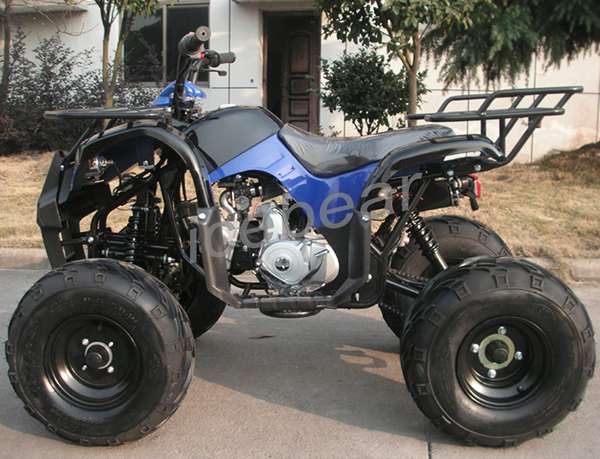 Any incorrect action while crossing a hill can cause serious injury, or even death!!!
Any incorrect action while crossing a hill can cause serious injury, or even death!!!
If you still need to cross a hill with an ATV, follow these rules:
Drive at low speed.
Tilt your torso towards the hill to transfer the weight of your upper body towards the slope. But be sure to keep your feet on the footboards.
In order not to lose direction, the machine must be steered slightly uphill.
If the ATV begins to tip over, quickly turn the front wheel downhill or leave the vehicle immediately.
Move in a straight line.
Transfer the weight of the torso to the rear of the machine.
Drive at low speed with light brakes applied.
Know how to operate the rear auxiliary brake lever.
If the machine stalls while lifting, do not let it roll down. Do the following:
Do the following:
Stop and put the gear selector in park mode, raise yourself up.
Turn off the engine.
Get off the ATV on the side that is on top. If the ATV is pointing up in a straight line, then you need to get off on the left.
Stand at the top of the machine and turn the steering wheel fully to the left.
While holding the brake lever, place the shifter in first gear and allow the ATV to circle slowly to the right until the vehicle is across the slope or turns slightly down.
Shift the shifter into park and sit back on the ATV from the top side while supporting your body weight.
While holding the brake lever, start the engine while shifting the gear selector to first gear.
After releasing the brake, drive slowly until the ATV is on level ground. Control the speed with the brake.
The ATV can cross shallow water (the depth should not exceed the level of the footrests).